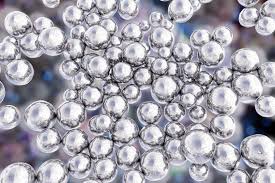
Can Doping with Nanoparticles be More Beneficial in Sensors?
Nanotechnology has revolutionized numerous fields, and sensors are among the most impacted. The integration of nanoparticles into sensor systems, known as nanoparticle doping, has emerged as a transformative technique to enhance sensor performance. From increased sensitivity to reduced response times, the benefits of nanoparticle doping are reshaping the landscape of modern sensing technologies.
What is Nanoparticle Doping?
Nanoparticle doping involves incorporating nanoparticles into the sensing material to improve its properties. These nanoparticles, which may include metals, oxides, or semiconductors, interact at the nanoscale to enhance the material’s ability to detect physical, chemical, or biological changes. The choice of nanoparticles and their dispersion plays a crucial role in determining the sensor’s performance.
Advantages of Nanoparticle Doping in Sensors
- Enhanced Sensitivity:
- Nanoparticles provide a larger surface area for interaction, significantly improving the sensitivity of sensors. For example, metal nanoparticles enhance the detection of trace gases in gas sensors.
- Faster Response Times:
- By reducing the path and interaction time for target analytes, nanoparticles enable quicker sensor responses, crucial for real-time applications.
- Selective Detection:
- Functionalized nanoparticles can be tailored to interact with specific analytes, enhancing the selectivity of sensors in complex environments.
- Miniaturization:
- Nanoparticle doping allows the development of smaller, more compact sensors without compromising performance, supporting advancements in portable and wearable devices.
- Improved Stability:
- Nanoparticles can increase the durability and operational life of sensors by reducing degradation from environmental factors.
Applications of Nanoparticle-Doped Sensors
- Environmental Monitoring:
- Gas sensors doped with nanoparticles detect pollutants like NOx, CO2, and volatile organic compounds (VOCs) with high accuracy.
- Healthcare:
- Biosensors use nanoparticles to detect biomarkers for diseases, enabling early diagnosis and personalized medicine.
- Industrial Automation:
- Nanoparticle-enhanced sensors monitor parameters like temperature, pressure, and humidity in manufacturing processes, ensuring quality control.
- Food Safety:
- Sensors with nanoparticles detect contaminants, pathogens, and spoilage indicators in food products, ensuring consumer safety.
- Wearable Technology:
- Wearable sensors doped with nanoparticles track physiological parameters like heart rate, glucose levels, and sweat composition for health monitoring.
Nanoparticles Commonly Used in Sensor Doping
- Metal Nanoparticles:
- Gold, silver, and platinum nanoparticles are widely used for their excellent conductivity and catalytic properties.
- Metal Oxide Nanoparticles:
- Titanium dioxide (TiO2), zinc oxide (ZnO), and tin dioxide (SnO2) enhance gas sensing and photocatalytic applications.
- Carbon-Based Nanoparticles:
- Carbon nanotubes (CNTs) and graphene improve electrical conductivity and sensitivity in sensors.
- Quantum Dots:
- These semiconductor nanoparticles offer high photoluminescence and tunable electronic properties, ideal for optical sensors.
- Polymer Nanoparticles:
- Functionalized polymer nanoparticles provide flexibility and chemical specificity in biosensors.
Challenges in Nanoparticle Doping
- Dispersion Control:
- Achieving uniform dispersion of nanoparticles within the sensing material is critical for consistent performance.
- Scalability:
- Transitioning from laboratory-scale fabrication to industrial production remains a bottleneck.
- Stability and Toxicity:
- Ensuring the long-term stability of nanoparticles and addressing potential health risks is essential for safe deployment.
- Cost:
- High-quality nanoparticles can be expensive, impacting the economic viability of mass production.
Future Directions
- Advanced Functionalization:
- Developing nanoparticles with specific surface functionalities to target diverse applications.
- Hybrid Nanostructures:
- Combining different types of nanoparticles to achieve synergistic effects and superior sensor performance.
- Green Synthesis:
- Exploring eco-friendly methods to produce nanoparticles for sustainable sensor technologies.
- Integration with AI:
- Using machine learning algorithms to analyze data from nanoparticle-doped sensors, enhancing precision and predictive capabilities.
Conclusion
Nanoparticle doping offers a revolutionary pathway to enhance sensor performance across a multitude of applications. While challenges like scalability and cost remain, ongoing research and innovation promise to address these issues. By leveraging the unique properties of nanoparticles, the next generation of sensors can achieve unparalleled levels of sensitivity, selectivity, and functionality, driving progress in industries ranging from healthcare to environmental monitoring
